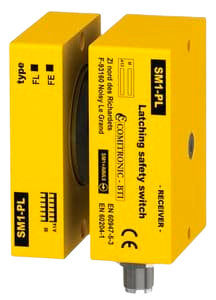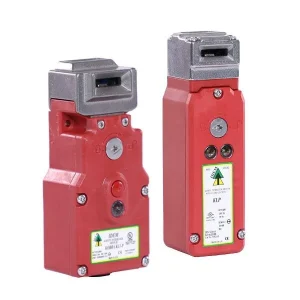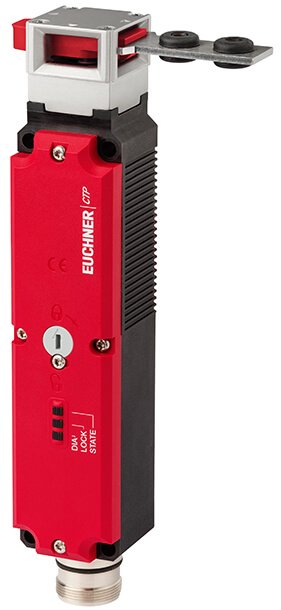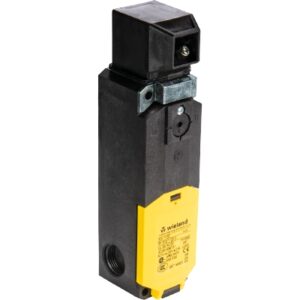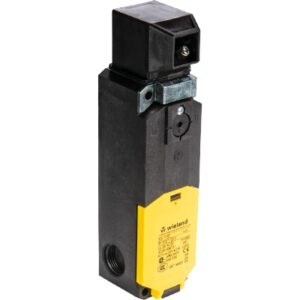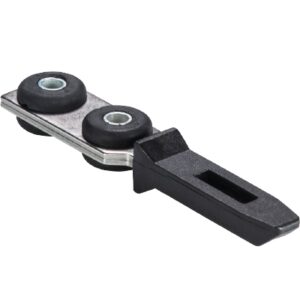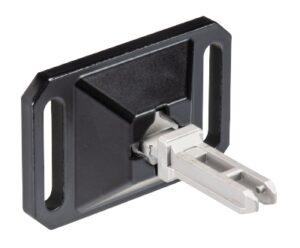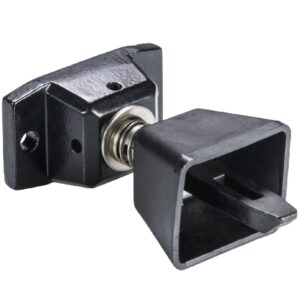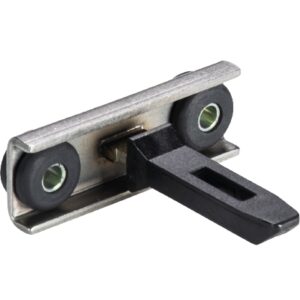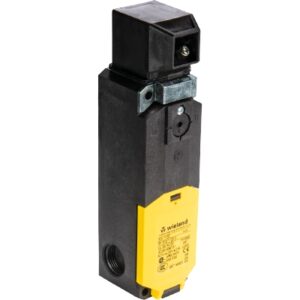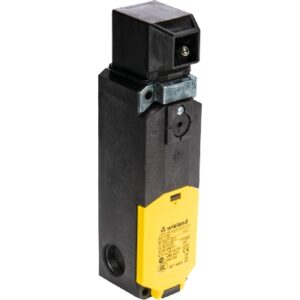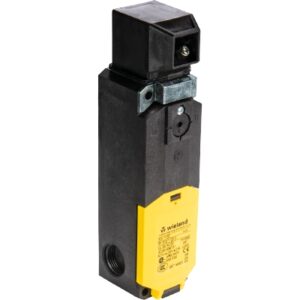Solenoid Locking Switches
Solenoid switches, specifically solenoid interlock switches and solenoid controlled safety interlock switches, are critical components in industrial automation systems. These switches are designed to secure…
Solenoid switches, specifically solenoid interlock switches and solenoid controlled safety interlock switches, are critical components in industrial automation systems. These switches are designed to secure movable guards, control access to dangerous equipment, and prevent unauthorised entry during operation. Available in various body types, including stainless steel, compact metal body, and die-cast metal, they are engineered for long-lasting operations in harsh environments.
Importance in Industrial Safety
Solenoid interlocks are used across high-performance safety applications, ensuring enhanced safety in hazardous environments like packaging equipment, beverage processing machinery, and automated warehousing. With features such as positive opening safety contacts, LED diagnostics, and dual-channel safety monitoring, these switches support a safe working environment and align with applicable machine safety standards including IEC 60947 and EN ISO 14119.
Types of Solenoid Safety Switches
Solenoid Locking Switches
Solenoid locking switches provide mechanical lock mechanisms to prevent unsafe operations. Options include power-to-lock and power-to-unlock models, ensuring compatibility with systems requiring different power supply setups (e.g., 24–240 VAC/DC). They support risk assessment frameworks by offering reliable lock status feedback and protection against unexpected start-up.
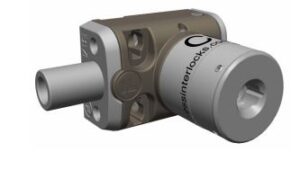
Solenoid Safety Switches
These switches are ideal for dual-channel safety monitoring relays and channel safety monitoring, offering secure interlock even under solenoid power loss. Their internal solenoids and switch mechanisms allow fast response during routine operation or emergency stops. High mechanical life and rugged enclosure protection make them well-suited for industrial environments.
Solenoid Interlock Switches
Solenoid interlock switches are designed for use with hinged machine guards, sliding doors, and removable machine guards. Their tamper-resistant cam interlock mechanisms, along with options for actuator entry positions, separate actuators, and rotatable heads, ensure flexible installation across a range of solenoid locking applications.
Safety Solenoid Switches
Designed for regular entry and actuator position verification, these switches offer diagnostic feedback, safety outputs, and options for IO-Link Safety and Safety Data Communications. Their robust positions, degree cable entry systems, and compact housings help reduce cabling costs and support customisable solutions for varied industry applications.
Key Manufacturers and Products
IDEM Safety Switches
IDEM’s range includes Solenoid Controlled RFID Safety Interlock Switches and non-contact RFID locking switches with options like Anti-tamper tongue technology and KLT-SS designs. Their solutions provide controlled access, real-time status feedback, and ergonomic actuators, making them a top choice for pharmaceutical manufacturing and motor-driven systems.
Wieland’s Solenoid Locking Switches
Wieland’s range of solenoid locking switches are engineered for robust machine safety, offering electromechanical guard locking that prevents access to hazardous areas until all motion has ceased. These switches combine secure locking mechanisms with reliable position monitoring, ensuring compliance with international safety standards. Ideal for industrial environments, Wieland’s solutions are built for durability, ease of integration, and long-term performance in high-risk automation systems.
Applications in Industrial Environments
Enhancing Operational Safety
These switches help prevent unauthorised access and operation of machinery during hazardous states. They are commonly used in automation systems, automotive battery manufacturing, and control boxes for electricity metering systems.
Optimizing Production Lines with Sensors
Solenoid switches integrated with safety timers, control stations, and customisable operator controls ensure precise control of access to dangerous equipment. Integration with safety relays and safety device networks allows for continuous monitoring of lock status and gate position.
Explosion Safety and ATEX Standards
In high-risk industrial automation applications, solenoid interlocks provide protection against defeat, lock monitoring, and compliance with ATEX standards. Their stainless-steel bodies and IP-rated enclosures support operation in high-temperature environments, offering levels of protection against dust, water, and impact.
Specialized Accessories and Innovations
Accessories for Enhanced Functionality
A complete range of accessories—including dual tongue entry points, connectors, modular actuator heads, and bracket kits—ensures adaptation to unique machinery setups. These enhance compatibility with aluminium profiles and fencing, slim housings, and enclosure ratings.
Broader Integration with Safety & Automation Systems
In modern industrial environments, solenoid locking switches are only one part of an integrated safety architecture. These systems will work in tandem with various critical components such as safety PLCs, safety contactors or safety light curtains (including muting light curtains) to ensure real-time hazard detection and safe machine shutdown. Common peripheral safety devices like the emergency stop button, two hand station, and emergency stop rope pull are all effectively managed by the safety PLC’s logic structure.
Advanced installations frequently incorporate safety relays, safety non-contact switches, RFID switches, and other forms of mechanical interlock switches—each adding specific protective functions to the machinery. To maintain continuous system health, engineers also deploy standstill monitors, speed monitors, soft starters, and reversing contactors within their automation frameworks. For measuring the product itself, solutions such as measurement light curtains can be integrated.
Beyond motion and logic safety, electrical condition monitoring is equally essential. Devices like insulation monitors, battery monitors, current monitors, voltage monitoring relays, phase sequence relays, undervoltage relays, and undercurrent monitoring relays are often integrated to detect anomalies in power flow or equipment performance, with this data displayable on HMI Touch Panels or similar systems. To support reliable operation, high-quality power relays and regulated power supplies are essential.
